Spring has taken its time to arrive in Ann Arbor this year, and today's weather suggests that March winds haven't quite given up the fight. But here and there, one can find a brave daffodill lifting yellow petals to the sporadic sunshine, and all over campus, little green buds and tiny leaflets are appearing on tree branches. May flowers are sure to follow soon!
April also happens to be National Poetry Month, so in celebration of both spring and poetry, we'd like to share a few springtime poems from the collection. Let's start off with Emily Dickinson's "The Tulip," from the third book of her poems (published posthumously). This finely crafted little verse describes the season close-up, looking at a tulip bulb nestled in a "cradle mute" all winter, until spring's footstep stirs it to push upward through the soil and blossom.

"The Tulip" by Emily Dickinson. Poems. Third Series. Edited by Mabel Loomis Todd. Boston: Roberts Brothers, 1896.
In "The Thawing Wind," Robert Frost tries to hurry the change of seasons, begging the rain to "Make the settled snow-bank steam; / Find the brown beneath the white;" and urging the storm to disolve the windows and walls that have trapped the poet indoors all winter. Included in Frost's first volume of poetry, A Boy's Will (1913), this poem for a blustery day is paired on the facing page with the gentler tones of "A Prayer in Spring," in which Frost celebrates the soul-nourishing pleasures of white apple blossoms, buzzing bees, and darting birds, even while gestering towards the possible anxieties of an "uncertain harvest" to come:
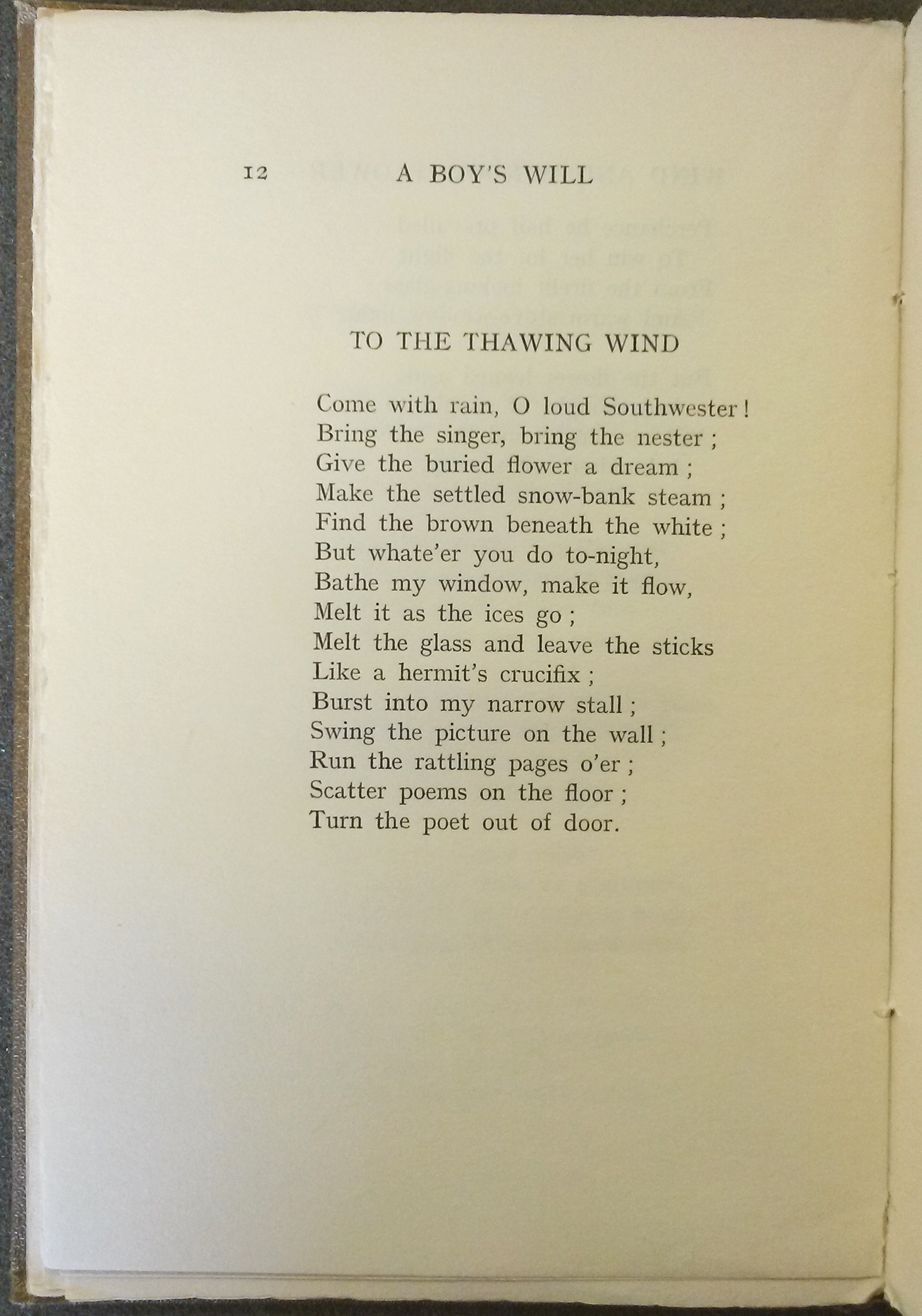
"The Thawing Wind" by Robert Frost. A Boy's Will. London: David Nutt, 1913.
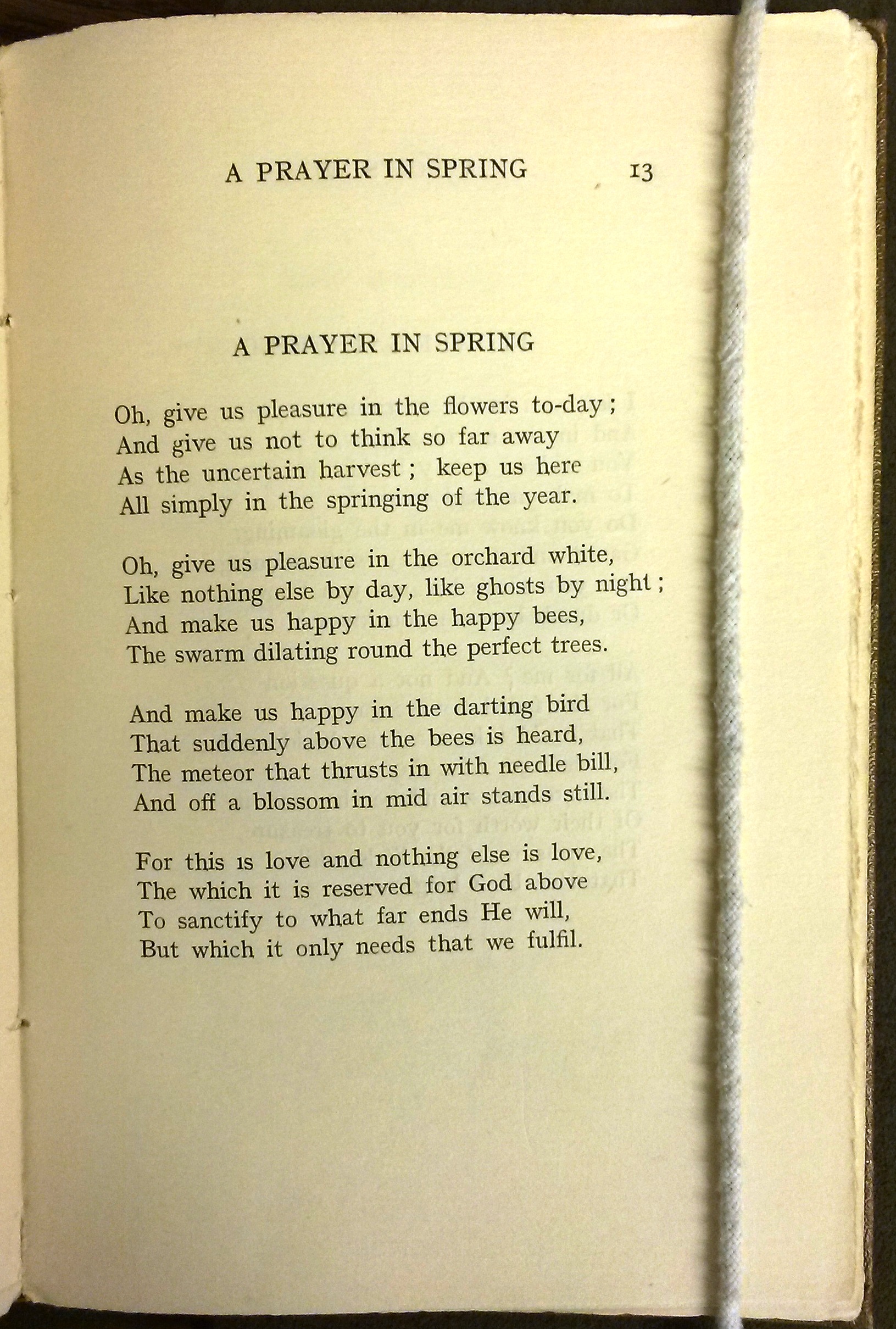
"A Prayer in Spring" by Robert Frost. A Boy's Will. London: David Nutt, 1913.
In "Three Spring Notations on Bipeds," published in Carl Sandburg's 1920 collection Smoke and Steel, the poet sketches impressions of springtime, from the circling, looping, racing blackbirds, to pigeons darting in the sun, to the carefree happiness of a child riding on the poet's shoulders through the prairie and throwing rocks in a pond.
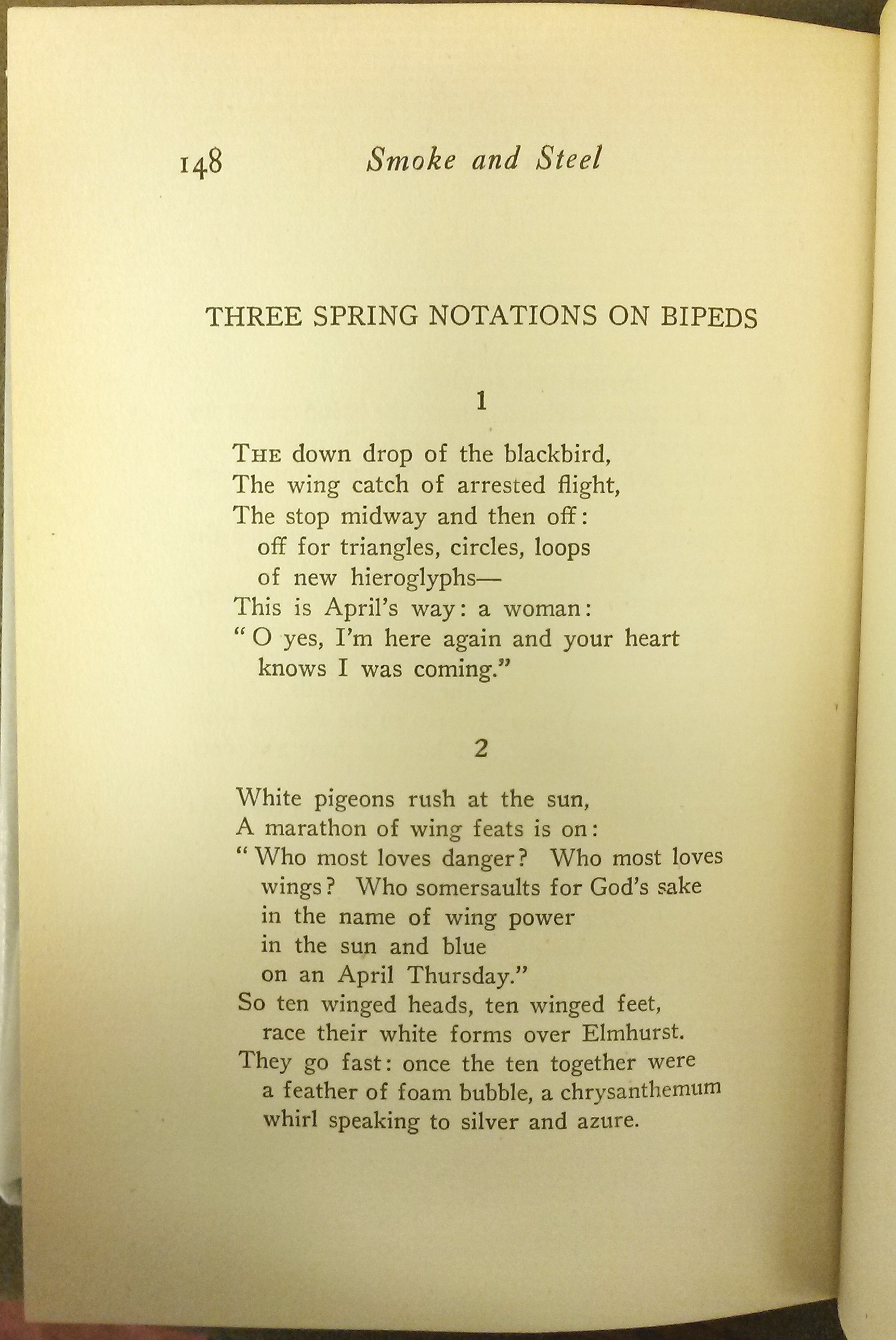
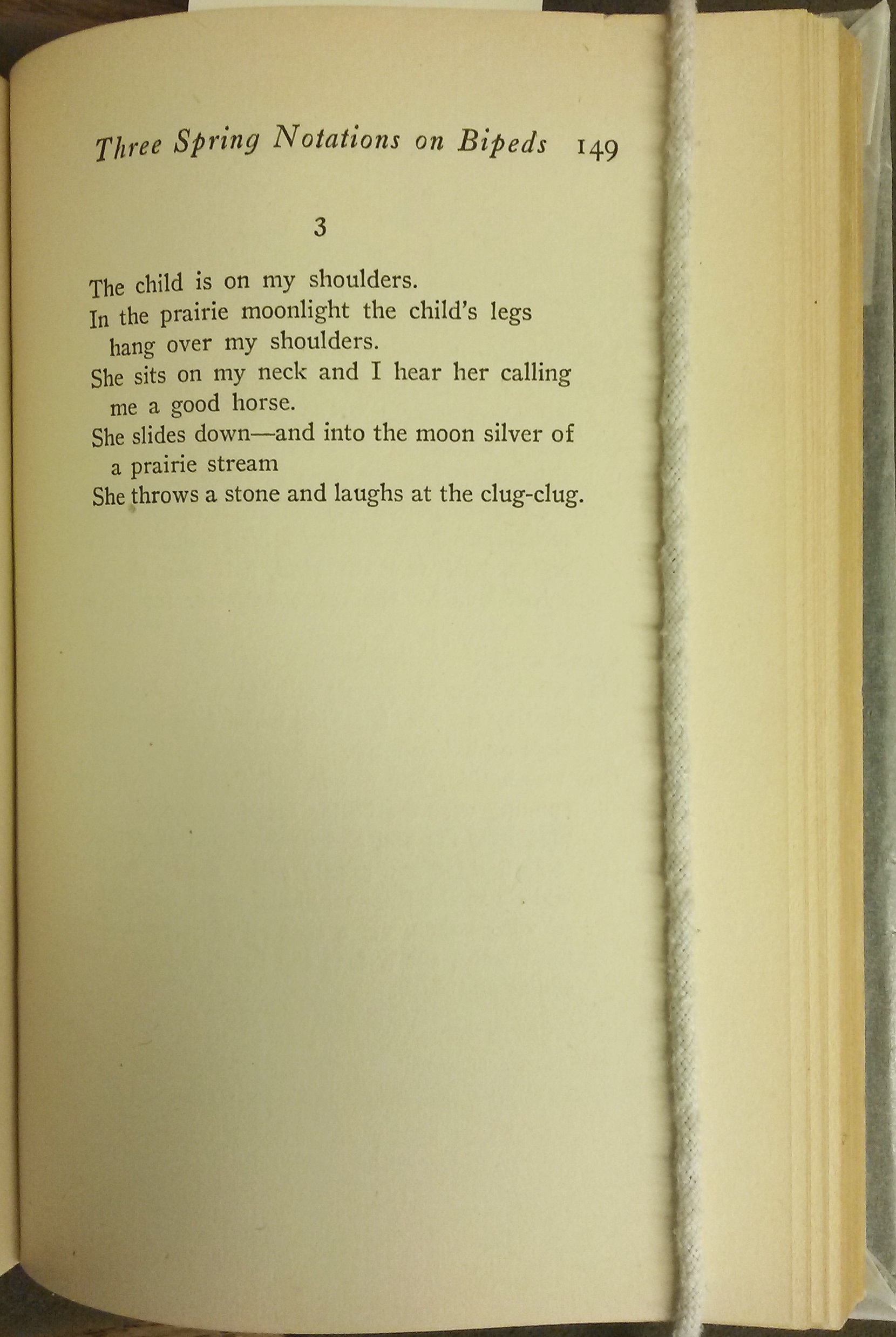
"Three Notations on Bipeds" by Carl Sandburg. Smoke and Steel. New York: Harcourt, Brace, and Howe, 1920.
And looking past spring's ethereal mists to summer's richer palate, in "More than Enough" poet Marge Piercy describes the fragrance of roses, the taste of blackberries, and the grit of sand that together comprise the taste and texture of the "Rich fresh wine / of June."
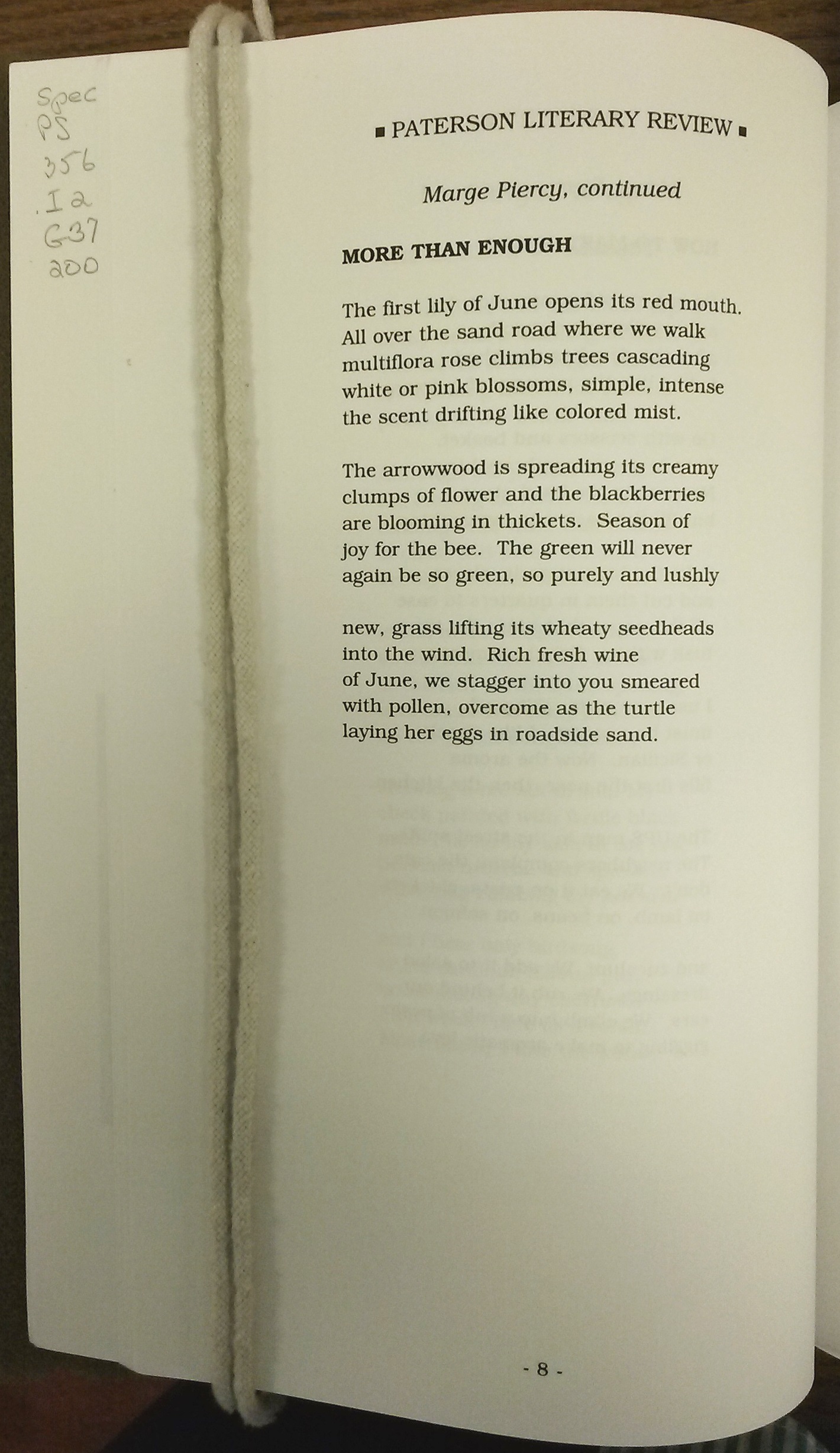
"More than Enough" by Marge Piercy. Paterson Literary Review, Issue 32, 2003.
Follow the links below to learn about other works by these poets in the Special Collections Library:
Emily Dickinson, 1830-1886
Robert Frost, 1874-1963
Carl Sandburg, 1878-1967
Marge Piercy, 1936 -